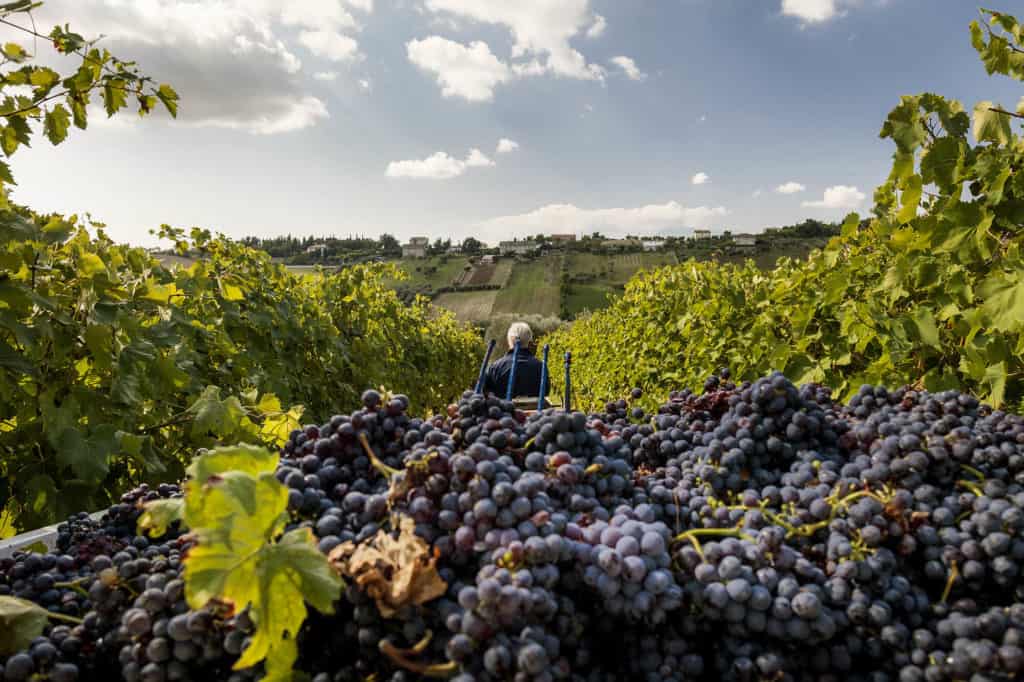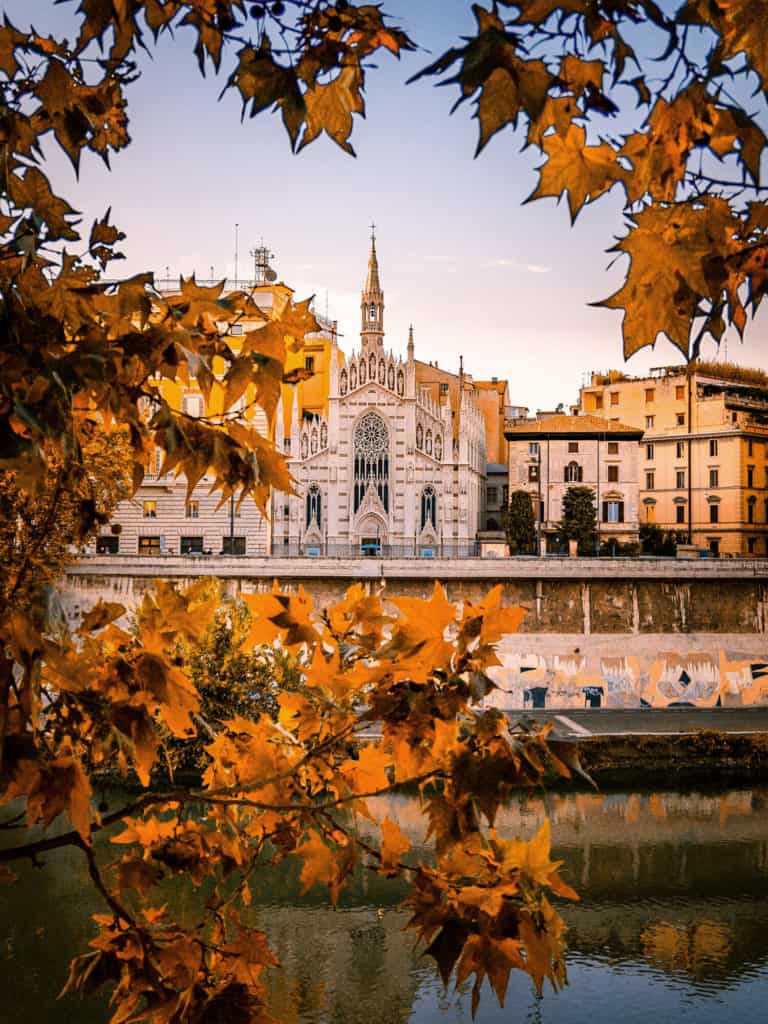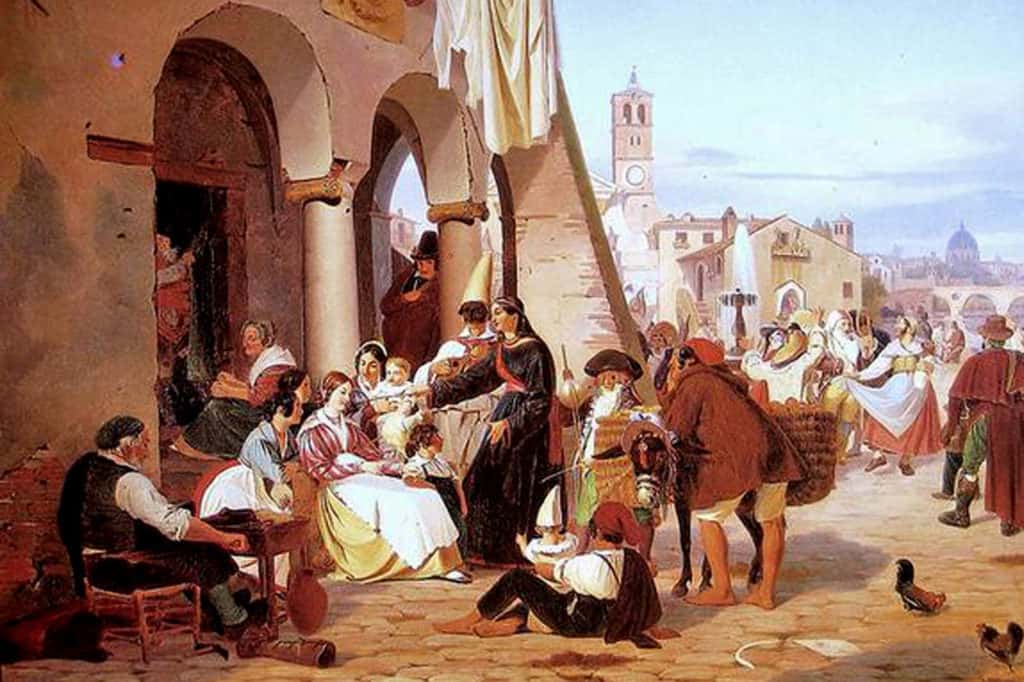Header image portrays Le Ottobrate Romane as painted by J.Sonne in 1840
October outings are an Eternal City tradition
Rome’s beauty is most often associated with its breath-taking historical monuments, gorgeous architecture, amazing art, fascinating history, swoon-worthy culinary traditions and spirited cultural experiences. Add to that long list the glorious Roman sunshine. In fact, it should come as no surprise that the city relishes in not just one summer, but two. We’re talking about the beauty of Ottobrate Romane (Roman October and subsequently outdoor escapes), that time of year which rolls right in after September, a season to be savoured just like a delicious bowl of carbonara. A magical month of balmy, sunny days and gentle, breezy evenings which enchant Romans and travellers alike. During Ottobrate Romane, the local harvest comes alive and the warm glimmer of the changing leaves along the Tiber casts a golden glow over the entire city.
The history of Ottobrate
Some say Ottobrate traditions can be traced back to the ancient Romans and their Bacchanalia and Dionysia feasts. The festivals were related to the cycle of the seasons and honoured Bacchus, the Greco-Roman god of wine, freedom, intoxication and ecstasy. With the advent of the Roman Republic, the Bacchanalia disappeared completely from the Romans fall calendar and it wasn’t until the 19th century that the Ottobrate Romane festivities reappeared in conjunction with the vendemmia (grape harvest).

Tradition has it that on Thursdays and Sundays in October, families would dress to impress, pack their bags and head out to celebrate the harvest. The most adventurous would head out for a scampagnata (a country jaunt which often involved a picnic lunch).
Prior to Italy’s unification in the late 1800s and the subsequent urban development of Rome as Italy’s capital, the city was surrounded by vast countryside, orchards and vineyards. Families would head to the rich vineyards that extended beyond Porta San Pancrazio around Monte Verde, the lush orchards just outside of Porta San Giovanni and Porta Pia, and the endless countryside out beyond Ponte Milvio to celebrate the golden warmth. Where you went off depended by where you lived. Those in Trastevere would often cross the Tiber to reach the grassy landscape of nearby Monte Testaccio. And for those less fortunate, the Borghese princes would often open the renowned residences of Villa Borghese on Sundays and set up lawns with rides, equestrian shows and athletic competitions. No matter where the spot, October signified a true feast of the senses including singing, musical merriment, dancing and lots of food and wine.
Ottobrate in the 21st century
The countryside festivities may have dwindled in the last century, but this beautiful period of mid-autumn splendour continues to embrace Rome. An annual weather pattern of hot air originating in Portugal’s Azores islands rolls through central Italy every year and the mild temps linger thanks to Rome’s protection by the Apennines. While most other Italian regions toil through their first frost, Mother Nature offers up one last summer hurrah before the chill of winter settles in.

Today as in the past, the Ottobrate Romane is still alive in the habits of the Romans and many a scampagnata can still be had. There are numerous day trips from Rome to take advantage of the “che bella ottobrata” (beautiful October) and the many delicious sagre (food festivals) that take place in the autumn season, making a fall trip to these villages even more appealing.
Hop on a vespa for some wine tasting and head to the vineyards surrounding the Castelli Romani (Roman Castles) and nestled within the Colli Albani (Alban Hills) which have been inhabited since prehistoric times. Taste some Romanella, the sweet effervescent red wine made from the vineyards in Ariccia or the famous white, red and sparkling wines from the Frascati vineyards. Or head to Tivoli to explore the 16th-century Villa d’Este, an UNESCO World Heritage Site famous for its terraced hillside Italian Renaissance garden and glorious fountains.
Urban escapes
There’s no better place to celebrate the beauty of Ottobrate Romane than within the Eternal City. Take a leisurely stroll north along the Tiber river and check out Renzo Piano’s Parco della Musica. Located near the Olympic stadium and Flaminio neighbourhood, the project includes an open-air amphitheatre and public space designed to embrace the life of the Flaminio district as well as three concert halls hosting musical, theatrical and cinematic performances throughout the year. Or head south along the Tiber towards the hip Testaccio neighbourhood for a stroll at the new Mattatoio contemporary art space (formerly MACRO – Rome’s Museum of Contemporary Art). Considered one of Rome’s most important industrial buildings, the complex was built by Gioacchino Ersoch between 1888 and 1891 and wandering the vast spaces is an experience in and of itself. Mattatoio offers exhibitions, retrospectives and events throughout October and much of the year.
